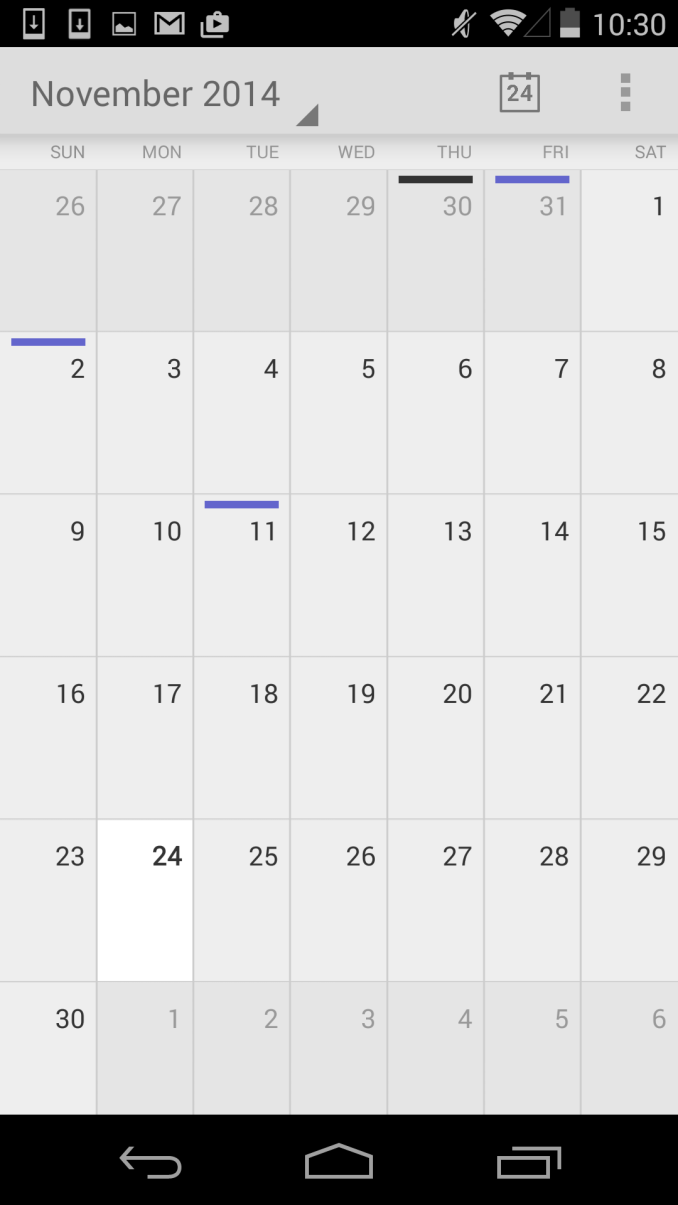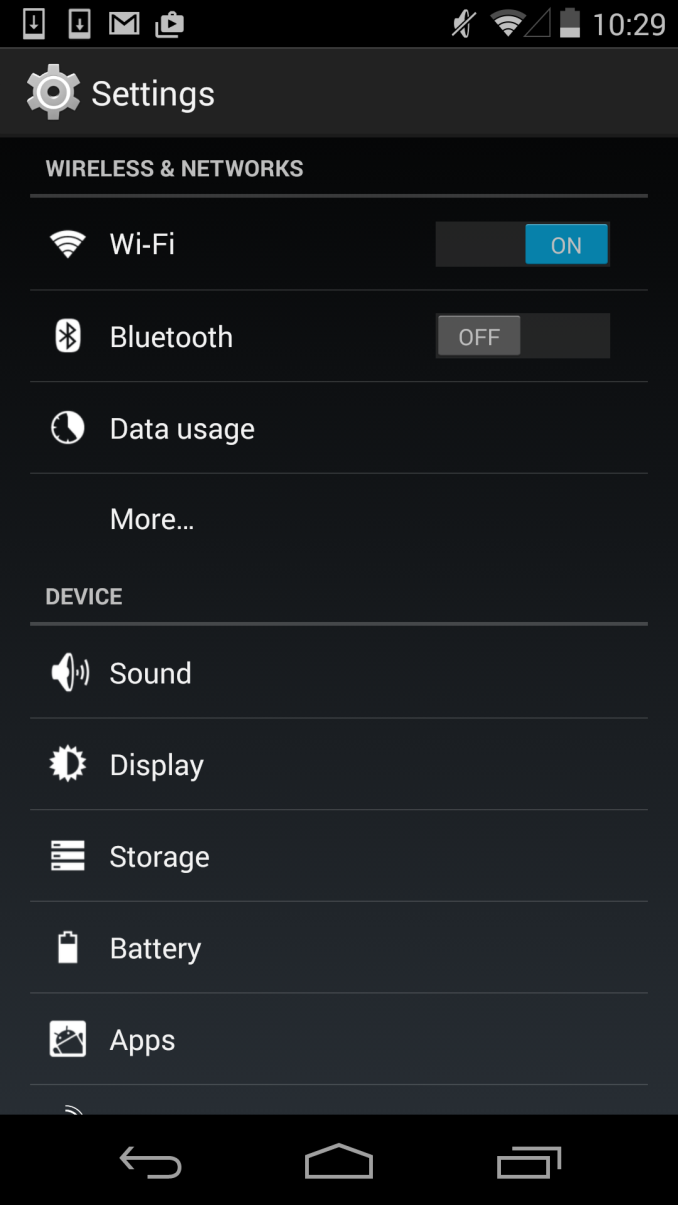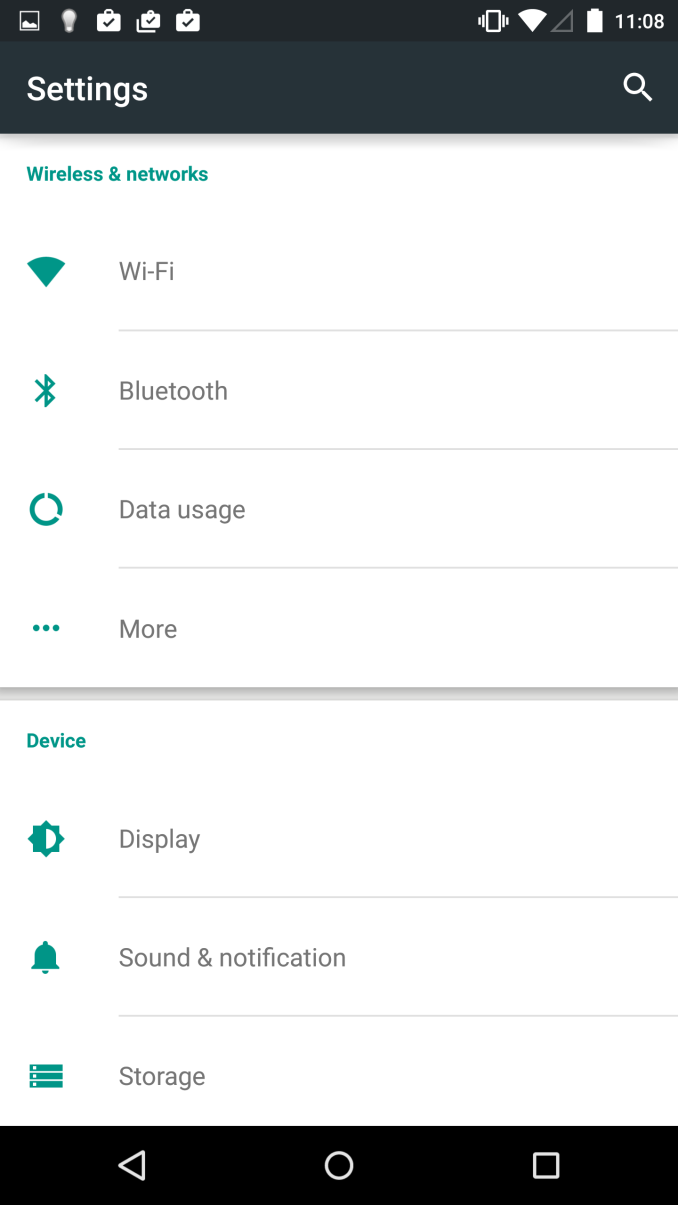The Android 5.0 Lollipop Review
by Brandon Chester on December 1, 2014 10:00 AM EST- Posted in
- Smartphones
- Android
- Tablets
- Android 5.0
Material Design
A good place to begin before discussing the operating system itself is to explain what exactly "Material Design" is. The term comes up a lot throughout the course of the review, which makes sense given how the biggest changes that users will see when moving from KitKat to Lollipop will be because of Material Design. Material Design is a set of design principles, and contained within them is something of a mission statement about Google's approach to services across multiple platforms. Material Design is definitely not Google's first big change to the Android interface, but this time I'm actually very confident that it will be the last we see for a very long time. I'm very impressed by the work Google has done to create an interface that looks and feels modern, simple, and beautiful. Before getting into what Material Design looks and acts like, I'd like to address and give my thoughts about Google's previous style of interface design which was called Holo.
To me, Holo always seemed like a transitional type of interface. Google had just brought on Matías Duarte, but as someone whose first smartphone was a Palm Pre, I didn't feel his influence anywhere at all. I think that Holo was a definite improvement over the previous Android interface, but that isn't really saying much. In my opinion, it still didn't feel coherent or look visually appealing. For example, if you showed me the two screens above without the status bar and navigation buttons, I would be hard pressed to tell you that they're from the same operating system. They don't share a single common interface element. The lack of color and use of grey was also questionable. While some users protest the heavy use of white in many modern interfaces, to me the grey that was commonly used in Holo Light applications was analogous to a dirty white cloth. The lacking color also made applications feel rather dull and lifeless, and I almost wondered if it was an effort to try and mask the fact that phones were shipping with either under-saturated or over-saturated displays by just having almost no color at all.
With my disappointment in Google's new interface, I was worried that it would just be something I would have to deal with for many years. Fortunately, less than one year after Android Ice Cream Sandwich was released, we were given a glimpse of the beginnings of a new type of design that was distinctly not Holo. It was in a feature called Google Now which launched with Android 4.1, and that many people now use everyday. This application used bright white cards to display relevant information, and had a much heavier use of color than any other applications that shipped along with Android. While at the time this could have been dismissed as the most obvious way to make an application that is constantly displaying and updating information for the user, in hindsight it was clearly the beginning of a new type of design being practiced at Google. It was still immature, lacking the animations, drop shadows, and dynamic nature of Material Design, but it began the dissolution of the Holo interface that had just been introduced.
Finally with the end of Holo, comes the beginning of Material. When Google gave a sneak peek of the new interface for Lollipop at Google IO I was very excited by what I saw seeing. The basic idea of the cards in Google Now had been applied to the entire operating system, and expanded upon in ways that I hadn't expected but have been pleasantly surprised by. As you can see above, both applications display the sections of the interface on white cards that float above the background and cast slight shadows. There's also a much greater use of color, and a better use of screen real estate by dividing the application into multiple sections which can be seen in the new Calendar application. The Settings application is actually a bad example in this regard, as the increased spacing means the main page fits less on screen than before, but this is an exception and I included it primarily to show the contrast between new and old.
Material Design is based upon the ideas of paper, lighting, shadows, depth, and color. While this sounds a lot like the skeuomorphic interface of previous versions of iOS, Material Design doesn't limit itself based on the actual limits of physical items like paper, and it doesn't go to the point where applications are merely digital recreations of real world objects. There's also a heavy use of animations. Everything you touch seems to respond with an elegant animation, and the different cards in the interface can expand, contract, and stack atop one another to create an extremely dynamic feel. It is truly hard to explain, and it's really something that needs to be used to be fully understood.
The last thing to say about Material Design is how it represents more than just a way to design applications. Like I said earlier, within Material Design is a mission statement about Google's approach to services across multiple platforms. Although I've discussed it within the context of the Android platform, Material Design is going to be what you see in Google's applications across every platform. From web apps, to Android, to Chrome, to iOS applications, you will see a consistent style of design that adapts to different display sizes, use models, and methods of input. Overall this is a great step forward in making Google's services consistent across all devices, but I think in the context of iOS applications Google may be going a bit too far by ignoring the design guidelines of that platform in favor of their own.














126 Comments
View All Comments
Poik - Monday, December 1, 2014 - link
It looks nice and coherent but I wish there was an option for inverted Colors as that would or could make a difference in battery life for those of us with OLED screens. The white everywhere is nice and clean but is also far more prone to being washed out in my experience.nevertell - Monday, December 1, 2014 - link
I for one welcome (our bright minded LCD overlords) the new design, as I am really tired looking at the dark and gloomy pre-Lollipop styling. And you can't really be mad at Google who is always trying to make the android experience consistent across all devices, and your OEM is free to change the colour scheme as far as I am aware.Murloc - Monday, December 1, 2014 - link
heh windows phone wins with OLEDs.They should definitely provide an alternative color scheme.
tralalalalalala40 - Monday, December 1, 2014 - link
Don't make google cater to the oled users. Why do people bring this up? Is the purpose of OLED devices to use the screen as little as possible? loltuxRoller - Tuesday, December 2, 2014 - link
Settings->accessibility->color inversionYou're welcome:)
Gadgety - Monday, December 1, 2014 - link
Lollipop. Far too many bright and cheerful battery wasting images. My kid got Lollipop to the phone but doesn't want to install it, because it will "change everything" and going back to 4.4 is a hassle. In short she's satisfied with 4.4 but doesn't see what will be gained with 5.0.Where did personalization and tailor making go - the original reason to get Android over iOS? Apparently the calendar only has 5 day weeks. I guess this will improve in future iterations, but in some areas Lollipop apparently presents a step backwards.
xenol - Monday, December 1, 2014 - link
This is the problem whenever you change your UI. Everyone thinks the UI is the only change that happened, disregarding anything else (like AOT instead of JIT for application performance).Like in Windows 8. There were a few things that I found under the hood (and some of them blatant) that I liked and were the reason for keeping it as my main OS, but everyone else harped on Metro.
At least with Lollipop, they didn't change much in the way of the user interface paradigms. But alas, too many loud mouths will constantly bash the look of something and not really understand the meat of it.
Gadgety - Monday, December 1, 2014 - link
What about the vegetables?tralalalalalala40 - Monday, December 1, 2014 - link
How dare you mention the 2 unmentionable days of the week.Gadgety - Monday, December 1, 2014 - link
So step by step Google will reformulate my experience. I want to be in charge of my phone, rather than Google, or Samsung. Google mixes brilliant with appalling.@tralalalalalala40 I stand corrected.
It's like the Keep app - great for entering data, abhorrent for structuring it. Of course one can always fall back on that Google function par excellence - search. By handing data to us like this, we become dependent on the search, and Google will know more and more about our habits, which is how they make their money. Datamining is where it's at.